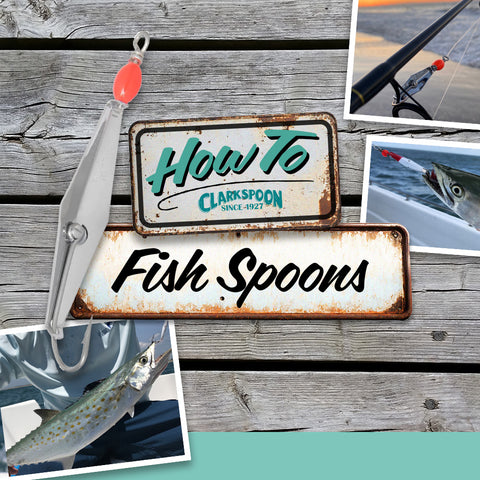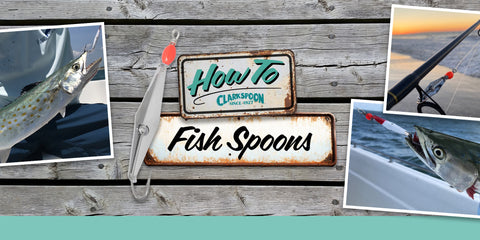How to Fish Your First Clarkspoon or Spoonsquid
Here’s everything you need to know about fishing our legacy lures!
Quick Mentions about your Spoon:
Clarkspoons and Spoonsquids were created to target Spanish Mackerel and bluefish but are successful with any species!
Clarkspoon is most popular in the Southeast and the Florida Panhandle, while the Spoon-Squid is the lure of choice in the Northeast Atlantic States and west coast of Florida.
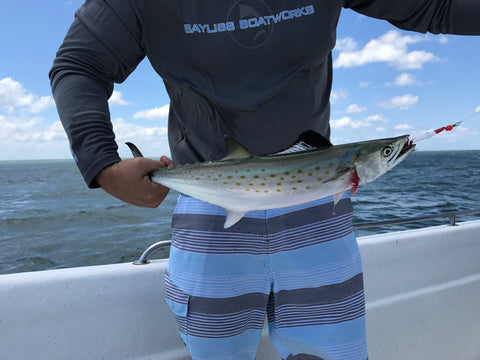
Deep Dive into Clarkspoons and Spoonsquids
Both lures were designed to mimic the silverside and glass minnows that are the primary forage of many inshore and nearshore game fish. The Clarkspoon closely resembles a healthy version of these bait fish with its tight wobble and spin. The Spoon-Squid, with a more exaggerated wobble, appears to be hurt and therefore easy prey. Our fishermen tell us that the Clarkspoon is preferable at higher trolling speeds.
Popular sizes: #00, #0, #1.
- In the Clarkspoon, popular sizes are available in chrome or gold plating.
Larger sizes (#2–#5) target school kings, large bluefish, stripers, tuna, and bonito. Just about any fish that feeds on small fish!
- Sizes #2 - #4 are only available in chrome.
To Troll or Cast Your Spoon?
Clarkspoons and Spoonsquids can be trolled or cast! However, when casting the appropriate weight must be placed a short distance before the lure.
Again, there are geographic preferences as to which lure is best suited for which use, but we have found them to be virtually interchangeable. For simplicity, the applications discussed will be in using Clarkspoons. In any of these applications, Spoon-Squids may be substituted.
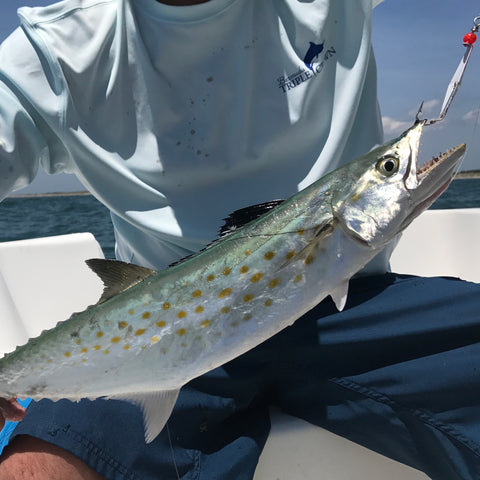
What Species can I target?
Clarkspoons and Spoon-Squids are ideal for trolling bluefish and Spanish mackerel. Smaller sizes (#00, #0) are best early in the season when both the bait and the fish are smaller. As the game fish and bait fish grow, the #1 and larger sizes gain in popularity.
Clarkspoons also attract:
- Atlantic bonito, false albacore, skipjack, and blackfin tuna.
- Occasional Catches: flounder, speckled trout, gray trout, red drum, cobia, cero mackerel, and king mackerel (larger sizes work best).
Many fishermen successfully mix some of the larger sizes into a lure spread in order to attract some of these larger fish.
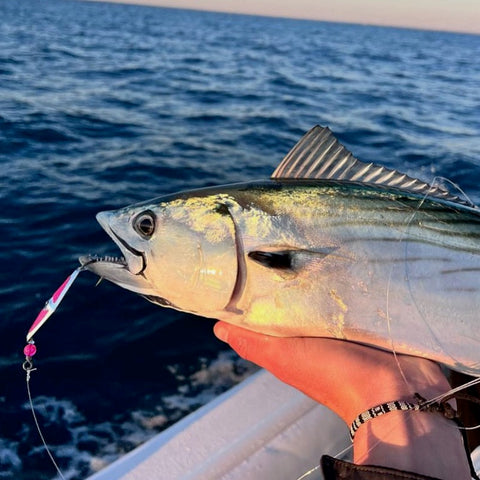
How to Use Your Clarkspoon
Clarkspoons have gotten so popular that enterprising fishermen have developed a variety of ways to use them. The most popular fishing method is trolling beneath the surface, behind planers or trolling sinkers. The standard procedure is to place the planer or trolling sinker at the end of the line and then extend a leader back to the Clarkspoon. We recommend using a mixture of sinkers or planer sizes and various lengths until you can find the feeding depth and pattern.
- Shallow Water or Near-surface: trolling weights between 1 oz. and 4 oz. or size #1 or #2 planers
- Deeper Trolling: Larger planers require stronger rods, downriggers, or hand lines.
- Hand lines: Preferably monofilament for flexibility and strength.
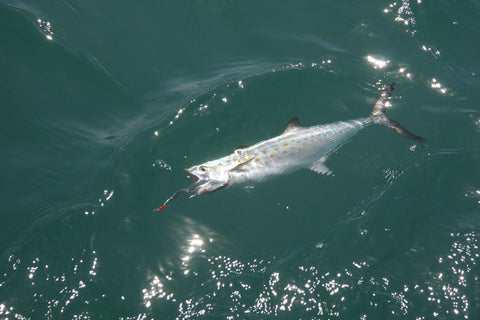
How to Use Clarkspoons with Planers & Hand Lines
Most trolling rods handle smaller size #1 and #2 planers. Be sure to set reel drag just tight enough to pull the planer without slippage. Larger planers require specialized rods, downriggers, or hand lines. Hand lines are easy to use and often are the salvation of a fishing trip if the fish are feeding at depths only reachable with the larger planers. Length, diameter, and density of the hand line affect how deep a planer can dive. Thin, strong, and flexible are the preferred qualities in a hand line. Monofilament is a better handline material than braided nylon or dacron. Stainless steel cable (49 strand) is even better yet.
- Planers dive about 1 ft for every 2 ft of appropriate line. Because fish do not always feed at the same depth, a well-equipped boat will have several handlines of various lengths.
- Hand lines should range from 20 to 75 ft for versatility in most situations.
- Too thick a planer line reduces dive efficiency, while too thin risks tangling and breaking.
- Using a downrigger or planer rod to pull the planer increases versatility, limited only by line length and planer size.
- Clarkspoons can also be fished on a separate rod and reel and affixed to the planer with a planer release assembly, allowing anglers to fight fish without drag interference of the planer.
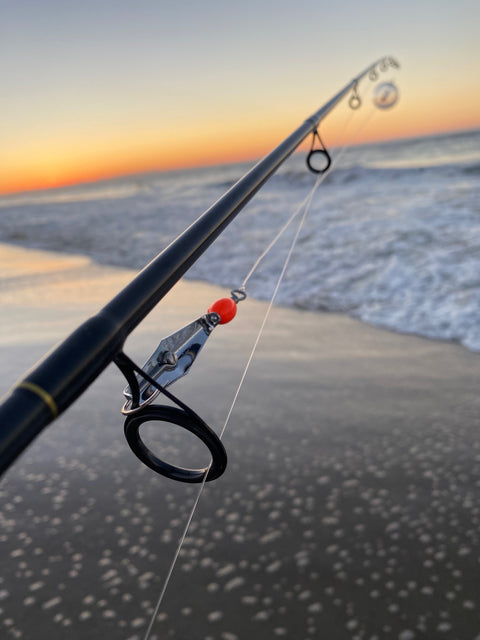
Recommended Weights, Leaders, and Tips!
- Fishing for Spanish Mackerel & School Bluefish: Use a 20-40 lb. fluorocarbon or monofilament.
- Fishing for King and Cero Mackerel and Larger Fish: Use a 50-80 lb. fluorocarbon or monofilament.
- Locals in some regions, such as the Florida Panhandle, favor nylon-coated wire leaders for added durability.
- Fluorocarbon is more expensive but less visible, improving effectiveness in clear water. Although you may rarely have a lure bitten off, the additional productivity more than compensates for the occasional lost lure.
- Smaller planers or trolling sinkers should have a leader length of 20-30 ft.
- Larger planers or clear water conditions may require a leader length as much as 40-50 ft.
- Plastic leader wheels make convenient storage for longer leaders.
- Clarkspoons wobble and spin very quickly as they move through the water. Sometimes this motion will “crawl” up the leader and cause it to twist and tangle. A ball-bearing swivel connected to the planer or trolling sinker will minimize this problem. Never connect the lure to the line with a snap swivel or the action will be impaired.
- An improved clinch knot (see our diagram below) is recommended to tie the lure directly to the leader.
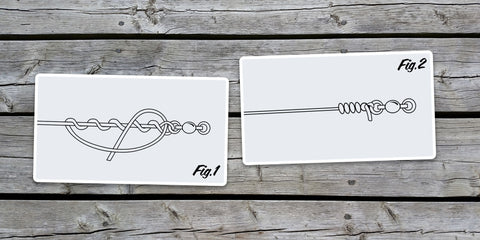
How To Rig
Fig 1. Pass the line through the eye of the hook, swivel, or lure. Double back, and make 5 turns around the standing line. Holding the coils in place, thread the tag end of the line through the first loop above the eye, then through the big loop.
Fig 2. Hold the tag end of line while pulling up the coils. Make sure the coils are in a spiral, not lapping over each other. Slide tight against the eye. Clip the tag end.
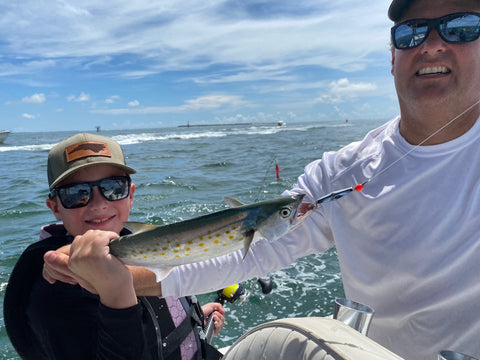
Recommended Trolling Speeds
Trolling speeds should vary for different species!
- Spanish mackerel, Atlantic bonito, false albacore, skipjack tuna, and smaller school king mackerel are fast, aggressive feeders, requiring speeds of 4-6 mph or more. In the absence of a speedometer or electronic indicator, a tachometer reading of somewhere between 1000 and 1500 rpm should get the job done!
- Bluefish requires slightly slower speeds
- Play with speed, adjusting to find the most productive rate for you!
Advanced Tips to Get the Best Out of Your Clarkspoon!
- If you are in an area where you expect fish, repeatedly turning the boat can trigger bites, as lure movement simulates baitfish behavior. In a tight turn, the dropping of the lure closer to the bottom will often yield an unexpected bonus such as a flounder or other deep-feeding fish. Avoid too tight of a turn or you will find yourself with a tangled mess!
- Add a Bird Rig! A Clarkspoon is tied behind a 5” bird with a #00 or #0 Clarkspoon creates irresistible surface action as it is trolled across the surface of the water. The fluttering movement mimics injured baitfish, drawing in predators. The suggested rig consists of a Clarkspoon 7 ft. behind the bird on 30 lb. monofilament or fluorocarbon.
- Add a Daisy Chain! In this rig, several squids or feathers are rigged ahead of a Clarkspoon. The squids are all the same distance apart, while the Clarkspoon is rigged at twice the distance behind the last squid, appearing to fish as an easy target. Although, generally fished below the surface, this rig may be used on top of the water. In order to keep this rig manageable, use 16”-18” spacing. It is also wise to use a wire leader between the squids on a daisy chain rig. A coated 30 lb. stranded wire saves lures and rigs since strikes on the squids, as well as the Clarkspoon, are frequent; and the squids or feathers are very vulnerable to sharp teeth.
- For even more fish attracting power, you can place a bird at the end of your line and then attach the daisy chain to it. As with any bird rig, this combination must be fished on the surface. Not only do these rigs catch a lot of fish, they also catch a lot of larger fish! The extra motion and excitement generated by the multiple rigs tend to attract older and more wary fish.

